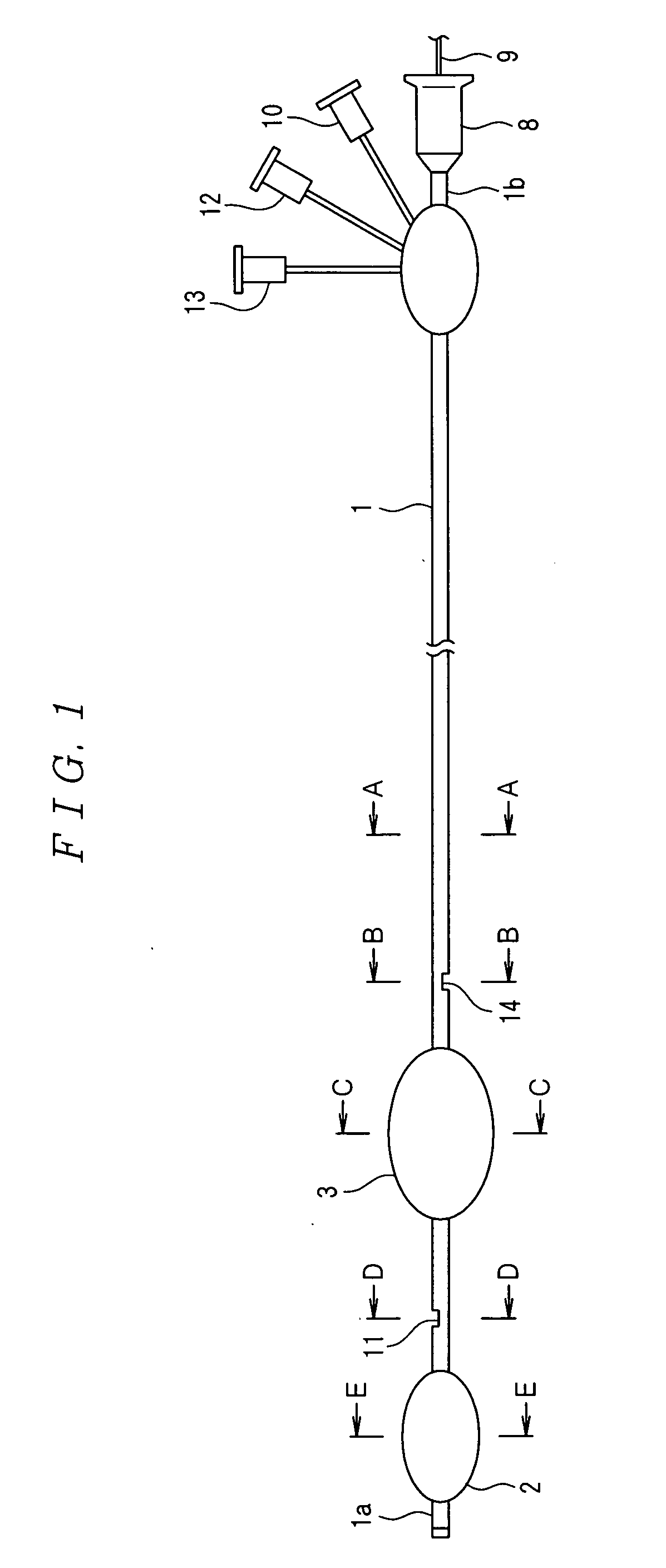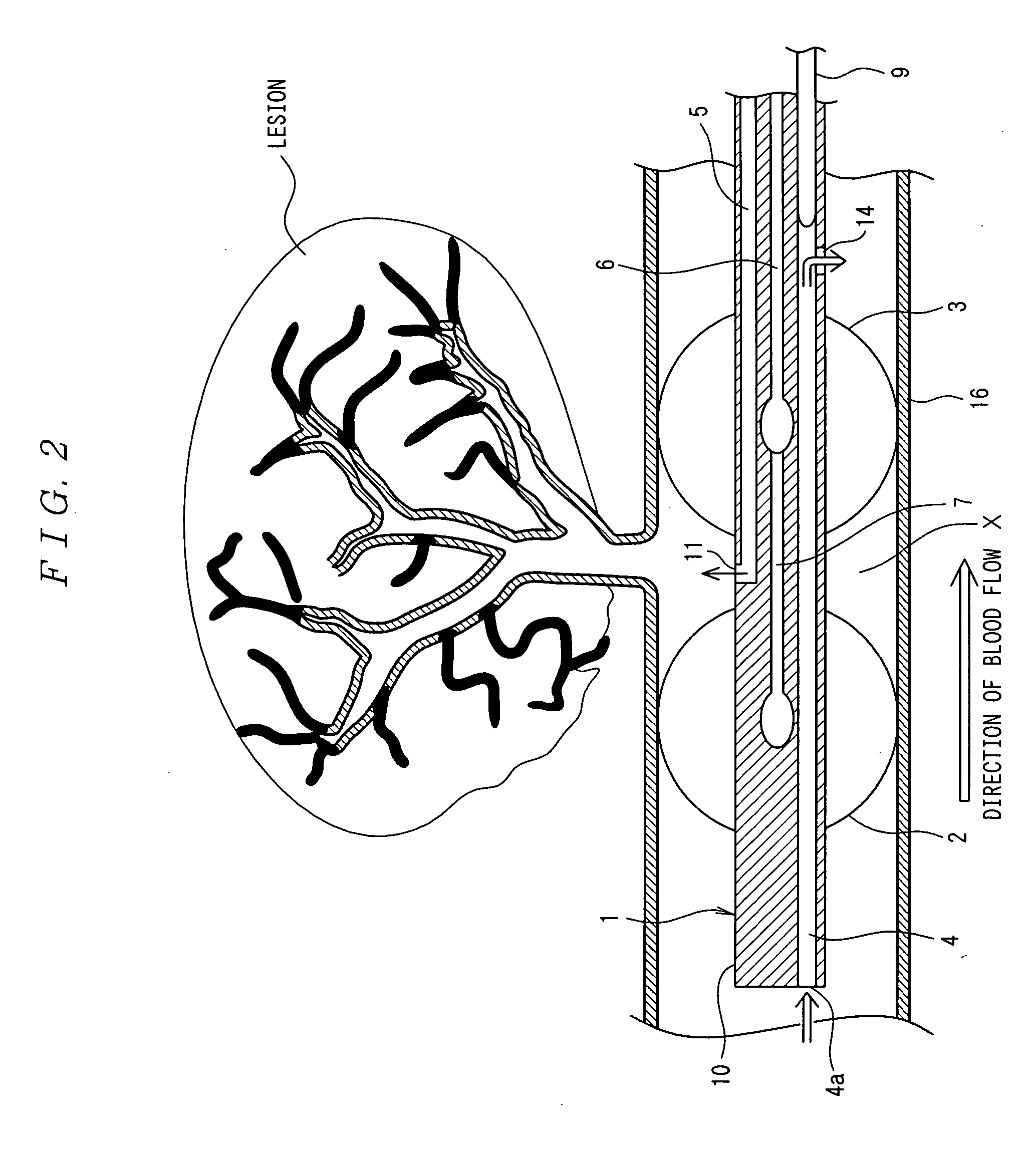Infusion therapy
a technology of infusion therapy and ischemia, which is applied in the direction of stents, dilators, surgery, etc., can solve the problems of insufficient infusion therapy into cardiac muscle tissue using conventional techniques, no means of improving an ischemia area, and high patient invasiveness, so as to increase the sectional area of the hole, reduce the number of lumens, and improve the effect of blood flow in the blood vessel
- Summary
- Abstract
- Description
- Claims
- Application Information
AI Technical Summary
Benefits of technology
Problems solved by technology
Method used
Image
Examples
Embodiment Construction
[0033] Now, an embodiment of the invention will be described with reference to the drawings.
[0034]FIG. 1 is a side schematic view of a balloon catheter according to an embodiment of the invention, and two balloons 2 and 3 are provided at a predetermined spaced interval on a side of a tip 1 a of a catheter body 1 constituted by a flexible tube.
[0035] The catheter body 1 includes four lumens as in a sectional view in FIG. 3. The four lumens are a guide lumen 4 that is the largest and also serves as a bypass lumen, an infusion lumen 5, and two pairs of balloon lumens 6 and 7 communicating with the balloons 2 and 3.
[0036] The guide lumen 4 is a lumen into which a guide wire 9 is inserted from a guide wire port 8 of a tail end 1b, and extends along the catheter body 1 from the tail end 1b to the tip 1a and opens at the tip 1a of the catheter body 1. A hole 4a of the tip 1a also serves as a hole proximal to the bypass lumen. Distal and proximal positions are presented herein with refer...
PUM
 Login to View More
Login to View More Abstract
Description
Claims
Application Information
 Login to View More
Login to View More - R&D
- Intellectual Property
- Life Sciences
- Materials
- Tech Scout
- Unparalleled Data Quality
- Higher Quality Content
- 60% Fewer Hallucinations
Browse by: Latest US Patents, China's latest patents, Technical Efficacy Thesaurus, Application Domain, Technology Topic, Popular Technical Reports.
© 2025 PatSnap. All rights reserved.Legal|Privacy policy|Modern Slavery Act Transparency Statement|Sitemap|About US| Contact US: help@patsnap.com



